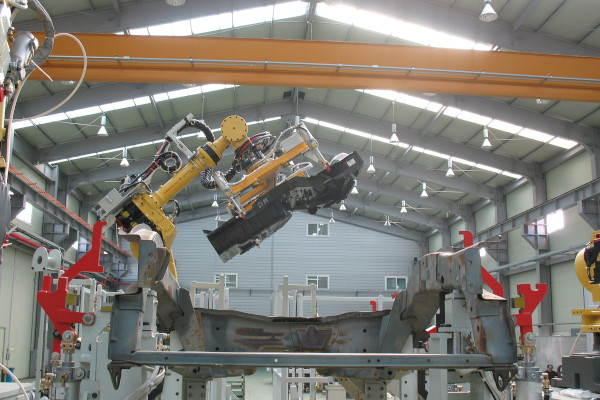In a period of heightened inflation, traditional quoting, auctioning, and negotiating approaches often are not enough to preserve margins. In our work with large and mid-sized clients in retail, consumer products, and industrial sectors around the world, we’ve seen one approach more consistent than any other in breaking open the supply chain to transparency, optionality, and improved costs: Digital Design-and-Source-to-Value (DSV).
What is DSV, and how is it different from Design-to-Value (DTV), which has been around for decades? Put simply, it offers a new approach to scoping customer needs and requirements in concert with suppliers rather than building something and hoping there is an audience for it (figure 1).
DSV takes the most knowledgeable data source about your product or service and places it at the center of a technical design and customer experience process—your suppliers. You can leverage the deep knowledge pool upstream by integrating suppliers into design ideation via product teardowns, detailed should-cost models, workshops, and competitive requests for proposals, including alternative design suggestions.
This is complemented by next-generation voice-of-the-customer input enhanced by digital surveying and web-scraping tools. The AI modeling for should-costing that can look up and downstream in the supply chain also speeds up the process from months to weeks.

Recently, we used DSV to help a medical device manufacturing client who had seen share loss after holding a high-margin, high-share position for years. Ceding market share to a competitor was damaging volumes, and no amount of quoting or negotiations could get the cost of goods into a competitive position due to stubborn inflationary pressure.
On the verge of exiting the segment, the manufacturer brought us in for one more kick at the problem. After an intensive tear-down and supplier-centered ideation and proposal process enhanced with AI-driven costing models, a technical redesign was achieved that elevated the customer experience while eliminating unvalued product design features. Clean win-wins on margin and revenue uplifts are not always the outcome of DSV but are also not unexpected.
How DSV can generate margin uplift
Complexity reduction and product portfolio rationalization: Identifying and streamlining complexities across product lines and operational workflows unlocks long-term cost-saving opportunities without compromising brand differentiators.
Competitor benchmarking and product teardown analysis: A strategic analysis scrutinizing premium versus value features, design, specifications, and marketing claims vis-à-vis key competitors. A thorough product tear-down offers invaluable insights, empowering businesses to discern strengths, weaknesses, and areas for enhancement. Meticulously examining design elements to discern value-contributing features enhances offerings, providing a competitive edge while minimizing unnecessary complexities.
AI-driven cost modeling and business case development: Industry-leading companies are building ground-up should-cost and should-pay insights through AI-driven models. Quantifying potential savings and benefits associated with complexity reduction aids those companies in creating a solid business case, guiding decision-makers toward strategic investments.
This can be achieved through targeted workshops with the right stakeholders. By fostering innovation and diversity within the supplier network, companies can facilitate a dynamic exchange of ideas to stay ahead of industry advancements. This has several key benefits:
- Validation and competitive quotes: Rigorous testing of current and alternate designs, along with soliciting competitive quotes, fosters informed decision-making and healthy competition among suppliers.
- Negotiation and implementation: Strategic negotiation with suppliers secures favorable terms beyond costs, leading to the finalization of awards and the commencement of implementation plans.
- Systematic integration: Systematic deployment of awarded contracts ensures seamless integration of suppliers into operations, maximizing benefits and fostering continual innovation.
Converting DSV principles to revenue uplift
In addition to improving costs, DSV can generate revenue increases from improved sales. AI and advanced tools can impact performance on several facets:
- Restore portfolio competitiveness: In helping a client, we found a dated product portfolio that no longer met customer requirements in some areas, lagging the feature and performance level of competitors while being more expensive.
- Next-gen voice-of-the-customer social listening: Monitoring online conversations and consumer sentiment aids in comprehending expectations, gathering feedback, and evaluating overall value perceptions. Leveraging social-media platforms enables companies to stay agile amidst evolving market trends.
- Price architecture and landscape analysis: A thorough evaluation of pricing strategies and tiers within a market is crucial for understanding consumer willingness to pay for enhanced features or brand reputation.
- Customer perception alignment: Evaluating whether consumers believe a brand's values align with its pricing propositions ensures resonance with the target audience, which is vital for fine-tuning marketing strategies.
Partnering with your procurement and product or service offering design teams in a digital DSV process typically involves “surge” resourcing—the day-to-day team wouldn't have the focus or bandwidth to accomplish the work otherwise and, since the work is cross-functional, it is prone to stagnation without a dedicated above the walls team with a vantage to what is coming down the pipeline.
Since these principles can be adapted to saturate sector knowledge in any given niche, there are many more applications for DSV. Procuring the next ideal service or product starts with opening the process to a new framework.
About the authors:
Steven DuBuc and Adam Fless are partners and managing directors of AlixPartners. Ted Brennan is a partner at AlixPartners. Amit Kohli is a director at AlixPartners and Nikhil Nayak is a senior vice president at AlixPartners.
SC
MR


More Network Design
 Explore
Explore
Topics
Business Management News
- ‘Purple People’ and the evolution of supply chain talent
- Looking for the next frontier of margin enhancement? Think structurally
- ISM May Semiannual Report calls for growth in 2024, at a reduced rate
- Supply chain salaries top $100K for first time
- Supply chain’s rise in prominence brings regulatory compliance into focus
- Inflation continues to have a wide-ranging impact on supply chains
- More Business Management
Latest Business Management Resources

Subscribe

Supply Chain Management Review delivers the best industry content.

Editors’ Picks





